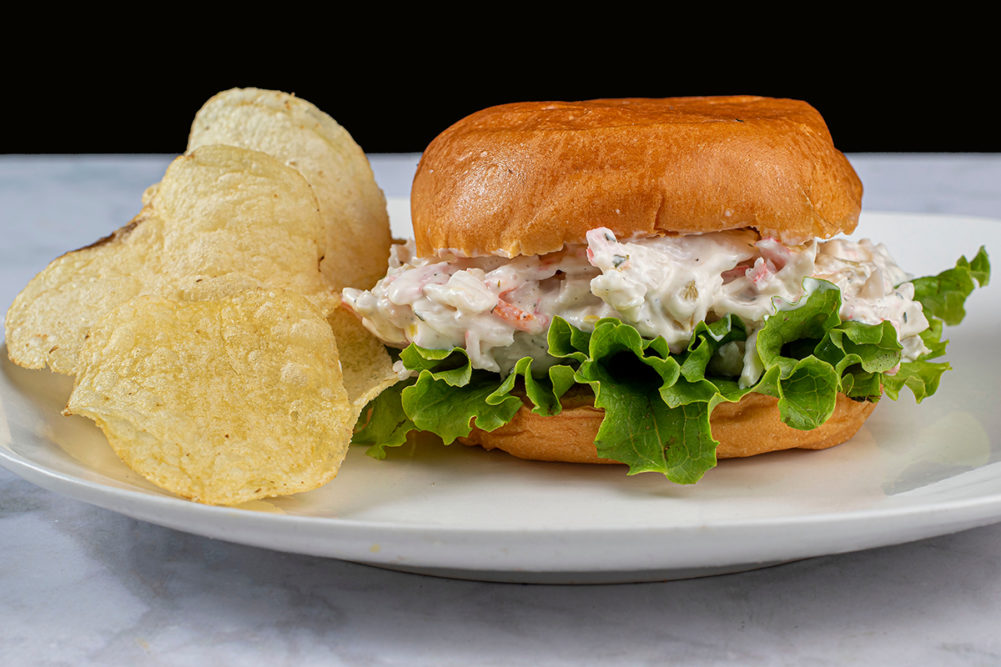Despite inflation on sushi and other prepared seafood items, shoppers continue to look to grocery stores to buy these products as they curb restaurant visits. While demand has fallen this spring, overall sales of value-added seafood items in both delis and seafood departments are up for the year.
Overall sales of prepared seafood items at delis grew 4.7% for the 52 weeks ending May 23, according to Nielsen data analyzed by Idaho Falls, Idaho-based strategic insights company Category Partners.
The sales growth was driven primarily by inflation, with unit volume rising only .5% during the past year, according to Eric Le Blanc, senior vice president of marketing. However, the most recent 13-week sales period ending May 23 show a different story, as units jumped up 13.7% and dollar sales only grew .9%.
For some households, deli-prepared foods are replacing restaurant meals, said Anne-Marie Roerink, principal at 210 Analytics. Because retail deli prepared foods are performing well overall, “we’re seeing the piggyback effect where feet are hitting the aisle and discovering the seafood offerings,” she said.
While shoppers may become more interested in sushi as inflation rises, they are also concerned about rising sushi prices at grocery stores, according to analysts.
Sushi sales climbed 3.8% to $2.58 billion for the year ending May 13, according to Nielsen. In the most recent quarter ending April 23, however, sushi sales climbed by only .9%, generating a significant $563 million, according to Circana OmniMarket Integrated Fresh data provided by 210 Analytics. Sushi price jumped 14% to $8.99 per unit on average over the year ending May 13, according to Le Blanc, representing the largest 52 week increase in average selling price since 2019-2020.
“It certainly could be the case that shoppers are keeping tighter rein on their higher dollar purchases and are cutting back on the frequency of their sushi purchases for lower-cost alternatives,” Le Blanc said.
And declining sushi sales could simply be “a matter of where the shoppers’ feet are headed,” he noted.
“Recently, there has been some evidence of strengthening in traffic at discount grocery retailers. If more premium supermarkets (the ones most likely to carry sushi) are losing some of their trips to discount outlets, they are presumably missing out on purchase occasions for sushi.”
However, seafood platters, salads, and appetizers serve as bright spots for supermarket operators. Seafood salads represent a 56% share of overall seafood deli sales, reaching $267 billion for the year. However, sales rose only .7% in the most recent quarter, according to Nielsen.
Seafood appetizer units jumped up 88.8% in the most recent quarter and rose 20.6% for the year. Appetizer sales represented an impressive 26% share of seafood deli sales — $189 million — for the year ending May 23.
Circana data also reveals a 30.3% hike in seafood app sales for the quarter ending April 23, while sales of seafood salads rose 13.5%, entrees rose 7.2%, and sandwiches inclined 2.3%.
As shoppers look to grocery stores to supply their holiday parties and other gatherings, sales of seafood platters in seafood departments are booming. Platters jumped 16.3% in sales and 20.6% in units for the year, according to Nielsen.
However, units dropped 7.4% and sales fell 3.4% in the quarter ending May 23, “suggesting that the resilience of party platter sales probably was a factor during the holiday season,” Le Blanc said.
“This shows a lower unit cost, either meaning there have been price reductions (regular or promotional) or a mix shift to smaller package sizes. It may be that demand has remained firmer for platters as they are entertaining/occasion-based products where consumers may be less price sensitive.”
Overall, seafood deli items remain strong as retailers have become more aggressive with merchandising them, according to Roerink. For example, Chandler, Ariz.-based AJ’s Fine Foods offers a variety of salmon and shrimp ready-to-eat or ready-to-heat items. And Pete’s Fresh Market in Chicago carries a wide variety of items that contain seafood in their “extensive deli food bars — from ceviche and seafood salads to cooked salmon and shrimp-based dishes,” Roerink noted.
The trends in meat and poultry are also shifting over to seafood, according to Roerink.
“Value-added has been a growth driver for years in meat/poultry, saving people time but also bringing added flavors that they wouldn’t have thought to create themselves, sometimes inspiring an entire new lineup of dishes,” she said, adding that shoppers often report that they “feel more confident when someone else, a professional, picks the flavors plus it’s saves time in preparation and shopping.”
Packaging innovations also allow retailers to merchandise individual or family meals ready to go into the oven or microwave, according to Roerink.
“For seafood, which has always had a higher cooking confidence barrier, this is a great way to widen adoption.”
To further boost sales, grocers can demonstrate value-added products’ taste appeal and provide shoppers with the confidence to prepare items themselves, Le Blanc advised.
For example, show how shrimp paired with a sauce or seasoning for grilling is easy to prepare and include appealing photo art.
“There is no more powerful tool for generating demand without price concessions. Branded partners (sauces, spices, or sides) can help expand the communication and defray some of the costs for communication tools,” Le Blanc said.
While retailers should expect overall demand loss with price increases in seafood and deli seafood, occasion-based marketing of seafood products may reduce short-term price sensitivity, according to Le Blanc.
“They don’t need to wait for a major holiday season, but marketing seafood products for holidays like Independence Day and Labor Day, or major social events (sporting events, graduation), combining the occasion with a specific use or recipe such as grilled shrimp for your July 4th cookout, should help to keep demand even in the face of price increases,” he said.
This article is an excerpt from the July 2023 Supermarket Perimeter issue. Read the full Seafood Prepared Foods feature and more in the digital edition here.

